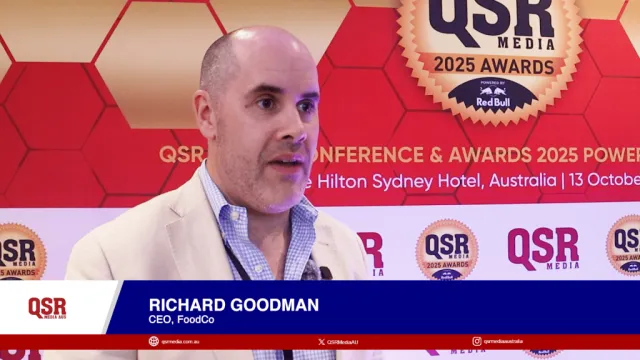
Global fast food market to hit US$1.2t by 2032
Tech, urbanisation & lifestyle shifts are reshaping the market.
The global fast food market is forecast to grow from US$822.66b in 2024 to nearly US$12t by 2032 at a compound annual growth rate (CAGR) of 4.9%, according to Maximize Market Research.
The sector is currently undergoing a period of transformation driven by shifting consumer preferences, technological integration, and broader socio-economic developments. Urbanisation and increasingly hectic lifestyles are fuelling demand for quick and convenient food options, reinforcing fast food’s presence as a staple in daily consumption.
At the same time, health awareness and environmental concerns are prompting brands to introduce healthier offerings and adopt more sustainable practices. These dynamics are influencing both product innovation and operational strategies across markets.
Urban environments, particularly those with active nightlife and late operating hours, are contributing to fast food’s growth. The ability of some outlets to operate 24/7 enables them to serve customers after night shifts or during irregular schedules.
However, the sector faces headwinds, including stricter food safety laws, concerns related to obesity, and socio-political disruptions.
Looking forward, technology and sustainability are expected to play larger roles. Increased adoption of mobile apps, online ordering systems, and partnerships with third-party delivery providers is expanding reach and customer convenience. Meanwhile, the use of international flavours and fusion dishes is becoming more prevalent, as brands seek to cater to diverse preferences.
Environmental regulations are also influencing packaging choices and supply chain decisions. Eco-friendly packaging and sustainable sourcing are emerging as key differentiators as brands respond to growing demand from environmentally conscious consumers.
Regional developments
In Vietnam, a young demographic and rapid urbanisation are driving strong growth in the fast food sector. International chains are expanding their presence and adapting menus to local tastes.
Thailand is seeing increased localisation of fast food offerings, incorporating native ingredients and flavours to appeal to consumers seeking familiarity and convenience.
In Japan, brands are focused on quality and innovation. The market features a blend of traditional and contemporary culinary styles, with chains offering unique items and experiences.
South Korea continues to be a fast-paced, competitive market, with domestic and international players quickly adapting to trends and using technology to enhance customer engagement.
Singapore presents a mature market where diverse offerings reflect the country’s multicultural population. Health and wellness trends are influencing menu development and nutritional transparency.
In the United States, the focus remains on digital transformation and menu diversification. There is an ongoing expansion of plant-based options and sustainability initiatives in response to shifting consumer values.
Across Europe, health and environmental concerns are prompting changes in sourcing and packaging. The use of organic ingredients, ethical sourcing, and sustainable materials is becoming increasingly common among fast food operators.
























